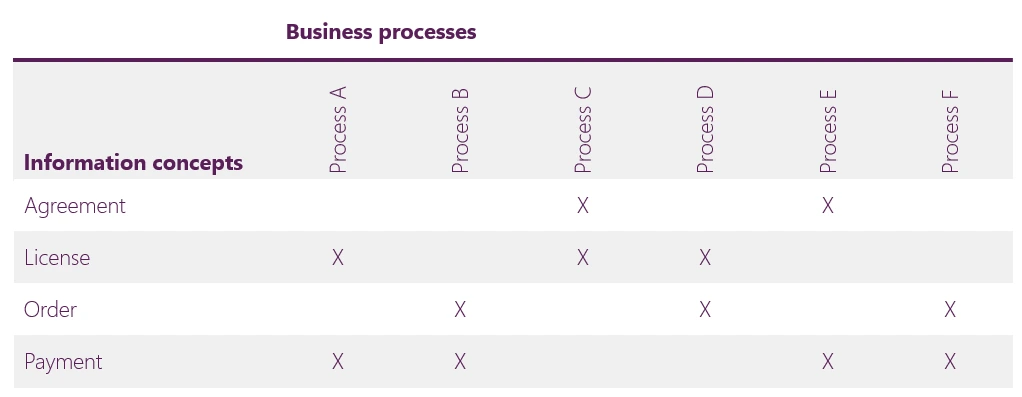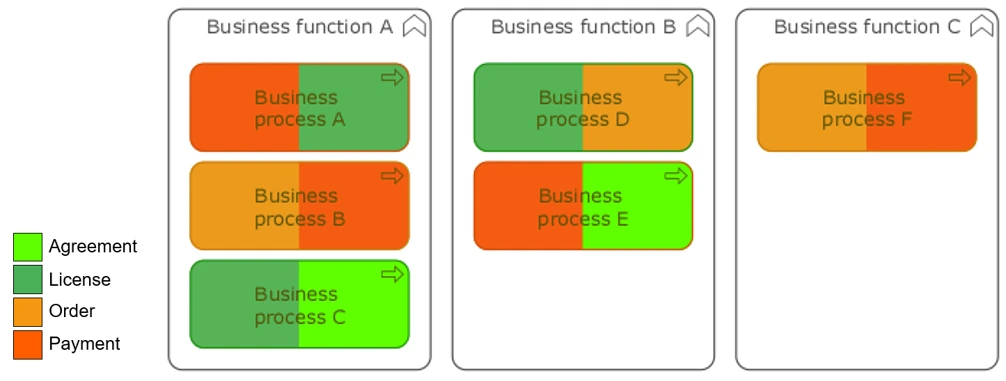A completed Information Concept/Business Process Matrix makes it possible to determine which information concepts are used by which business processes. This matrix can be used to map information flows. It shows where information circulates in the organization. The power of this matrix can be further enhanced by creating an Application/Information Concept Matrix or an Application/Business Process Matrix.
The combination of two matrices results in a detailed representation of the information concepts used in the organization. For each information concept, it shows which application uses which information concept and which process accesses the information concepts. This is useful during application replacement projects or when processes are adapted. The impact on the information flow can be determined in both situations.

Graphical representation
As with all matrices, a more graphical representation of the Information Concept/Business Process Matrix can also be created. This is then called an Information Concept/Business Process Diagram. Because the information concepts are related to other elements (in this case, business processes), an architecture tool can create a cross section and present it using colors (creating a color view).

The figure above shows which business processes belong to which business functions and where each information concept is used in which business processes. To illustrate, the Agreement information concept is used by business processes C and E.
The ability to create color views is a powerful feature of the architecture tool. They often show at a glance the relationships that exist between elements in the diagram and elements that are related to them but not visible in the diagram. In effect, a color view adds an extra layer or dimension to an existing diagram. The ability to use color views is one of the potential requirements when purchasing an architecture tool.
More information
For additional information about creating an Information Concept/Business Process Matrix, please refer to Chapter 8, Section 8.2.1.3, of my book Getting Started with Enterprise Architecture.
